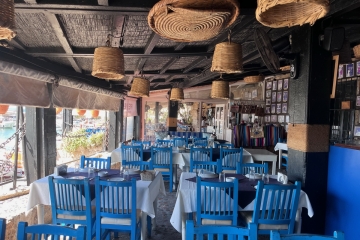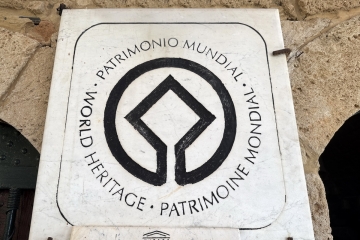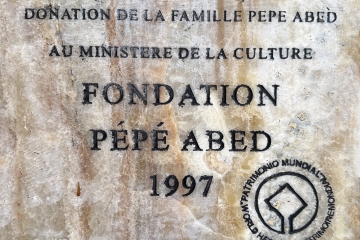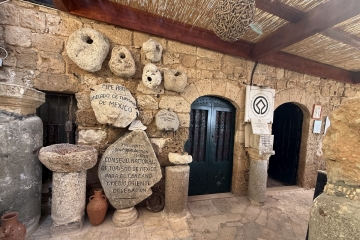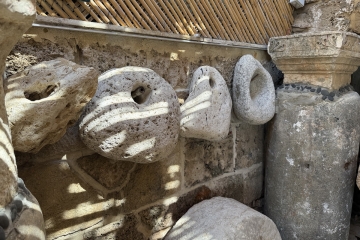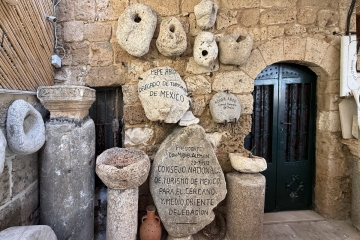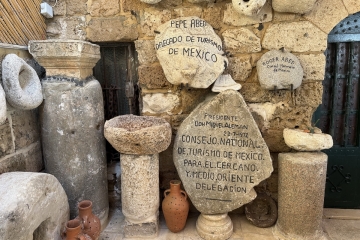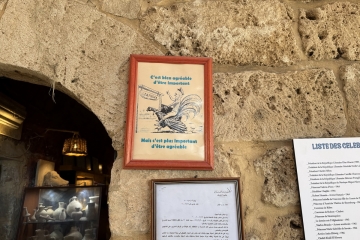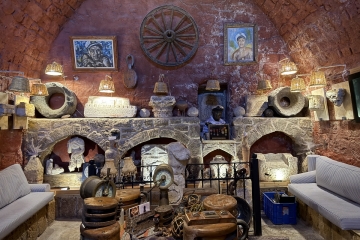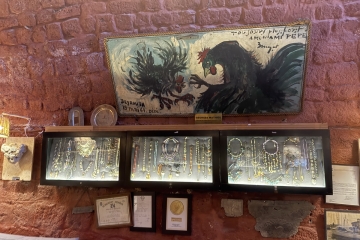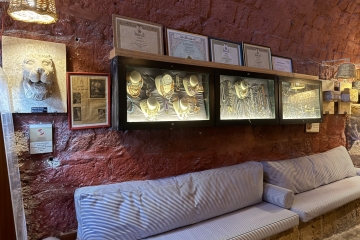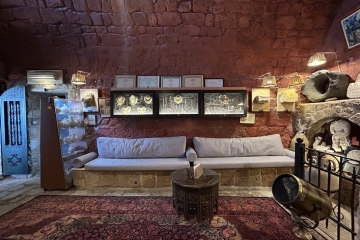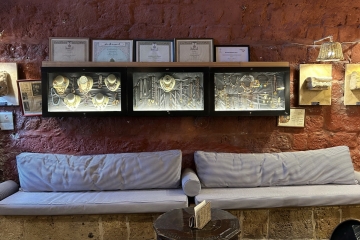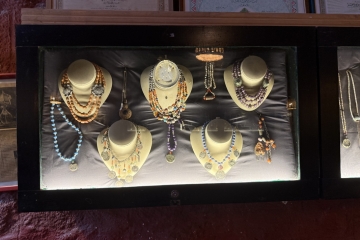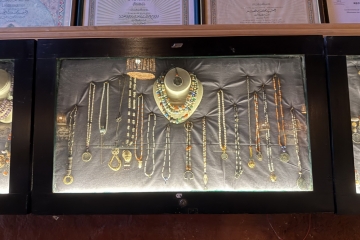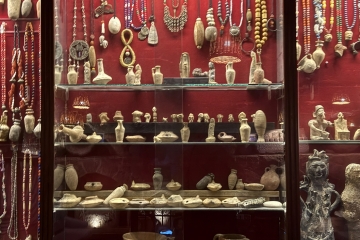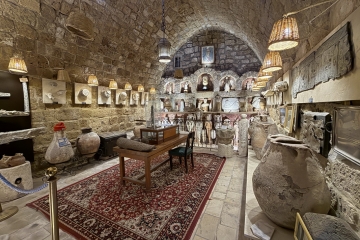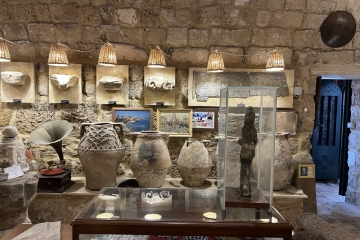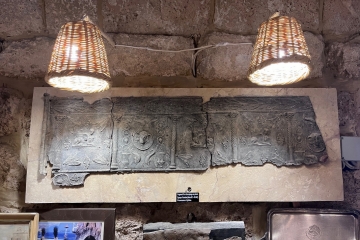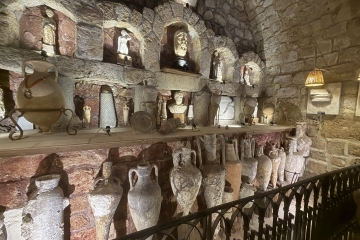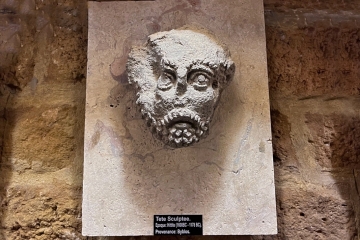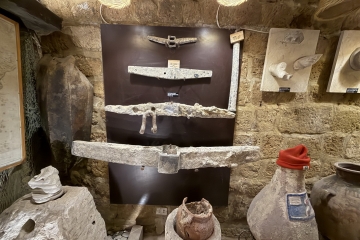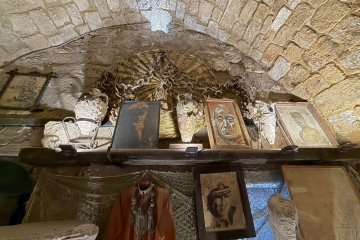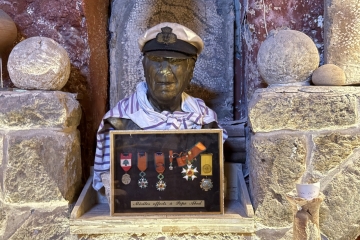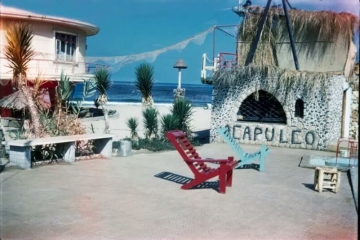منحف بيبيه عبد - جبيل
Le musée « Pépé Abed » à Byblos est situé au sein du restaurant de Pépé’s Byblos Fishing Club, dans le port historique de Byblos
Ce musée expose une collection variée d’objets antiques, principalement liés à la mer.
Ces pieces comportent des amphores, ancres, statues, bijoux, monnaies, bustes en marbre et autres vestiges.
Elles ont toutes été récupérées au fil des années par Pépé Abed, lors de ses plongées au large de Byblos.
L’ensemble illustre à la fois le patrimoine archéologique de la côte libanaise et l’univers de son fondateur, mêlant passion de la mer, plongée sous-marine, restauration et tourisme dans l’atmosphère des années 1960-1970.
Certains plateformes culturelles, entre autres le site BAM de l’Agenda Culturel indiquent que le musée serait supervisé par l’UNESCO.
Ainsi, le lieu raconte une double histoire :
- celle de Byblos, l’une des plus anciennes cités habitées au monde ;
- et celle du Liban durant ses années d’or, marquées par l’engouement touristique et l’accueil de nombreuses célébrités.
L’histoire de Pépé (1911 - 2006) en résumé:
Né en 1911 à Rmeil sous le nom de Youssef Gergi Abed, Pépé Abed fut entrepreneur, aventurier et pionnier du tourisme balnéaire au Liban. Après une jeunesse passée en partie au Mexique, il revient au pays dans les années 1950 et devient une figure emblématique de Byblos.
En 1954, il fonde La fameuse plage-club Acapulco Beach Club à Jnah (près de Beyrouth)
En 1962, il fonde le célèbre Byblos Fishing Club, rapidement devenu un lieu incontournable pour les artistes, voyageurs et personnalités internationales. Passionné de plongée, il enrichit progressivement son établissement d’objets archéologiques trouvés sous la mer, ce qui donnera naissance au musée.
Le nom de Pépé Abed est aujourd’hui mentionné dans les guides touristiques comme l’un des ambassadeurs du charme byblossien et du Liban tourné vers la mer.
The “Pépé Abed” Museum in Byblos is located inside the restaurant of Pépé’s Byblos Fishing Club, in the historic port of Byblos.
It features a diverse collection of ancient objects, primarily related to the sea.
These pieces include amphorae, anchors, statues, jewelry, coins, marble busts, and other archaeological remains.
All of them were recovered over the years by Pépé Abed during his dives off the coast of Byblos.
Together, they illustrate both the archaeological heritage of the Lebanese coastline and the world of its founder — blending a passion for the sea, scuba diving, hospitality, and tourism in the atmosphere of the 1960s–1970s.
Some cultural platforms, including the BAM website of L’Agenda Culturel, indicate that the museum is supervised by UNESCO.
Thus, the site tells a dual story:
- that of Byblos, one of the oldest continuously inhabited cities in the world;
- and that of Lebanon during its golden years, marked by a booming tourism industry and the arrival of numerous celebrities.
A brief biography of Pépé (1911–2006):
Born in 1911 in Rmeil under the name Youssef Gergi Abed, Pépé Abed was an entrepreneur, adventurer, and pioneer of seaside tourism in Lebanon. After spending part of his youth in Mexico, he returned to Lebanon in the 1950s and soon became an iconic figure of Byblos.
In 1954, he founded the famous Acapulco Beach Club in Jnah (near Beirut).
In 1962, he founded the famous Byblos Fishing Club, which quickly became a must-visit spot for artists, travelers, and international personalities. Passionate about diving, he gradually enriched his establishment with archaeological objects retrieved from the sea, which eventually led to the creation of the museum.
Today, Pépé Abed’s name is still featured in travel guides as one of the ambassadors of Byblos’s charm and a symbol of a Lebanon connected to the sea.
متحف «بيبي عبد» - جبيل
يقع متحف بيبي عبد Pépé Abed داخل مطعمByblos Fishing Club في الميناء التاريخي لمدينة جبيل، ويعرض مجموعة متنوعة من القطع الأثرية القديمة المرتبطة بالبحر.
تنضمّن هذه القطع: الجرار الفخارية، المراسي، التماثيل، الحلي، النقود، التماثيل النصفية الرخامية، وغيرها من الآثار التي جمعها بيبي عبد على مدى سنوات خلال غوصه في البحر قبالة سواحل جبيل.
تُظهر هذه المجموعة التراث الأثري للساحل اللبناني، كما تعكس عالم مؤسسها الذي جمع بين شغف البحر والغوص تحت الماء والمطاعم والسياحة، في أجواء تعود إلى ستينيات وسبعينيات القرن العشرين.
تشير بعض المنصات الثقافية، مثل موقع BAM «الأجندة الثقافية»، إلى أن المتحف يخضع لإشراف منظمة اليونسكو.
وهكذا، يروي المكان قصتين في آن واحد: قصة مدينة جبيل، إحدى أقدم المدن المأهولة في العالم، وقصة لبنان في سنواته الذهبية التي تميزت بازدهار السياحة واستقبال عدد كبير من الشخصيات والمشاهير.
قصة بيبي عبد (1911 – 2006) باختصار:
وُلد في عام 1911 في منطقة الرميل باسم يوسف جرجي عبد، وكان رجل أعمال ومغامرًا ورائدًا في السياحة البحرية في لبنان. بعد أن قضى جزءًا من شبابه في المكسيك، عاد إلى الوطن في خمسينيات القرن العشرين وأصبح من الشخصيات البارزة في جبيل.
في عام 1954، أسّس المنتجع الشهير أكابولكو بيتش كلوب في جناح، قرب بيروت.
في عام 1962، أسس في جبيل Byblos Fishing Club الذي سرعان ما أصبح مقصدًا للفنانين والمسافرين والشخصيات العالمية. وبفضل شغفه بالغوص، بدأ بجمع القطع الأثرية التي كان يجدها في أعماق البحر، مما أدى لاحقًا إلى إنشاء المتحف.
تمّ ذكر اسم بيبي عبد في أدلة السياحة كأحد أبرز رموز سحر جبيل وواجهة لبنان البحرية.

